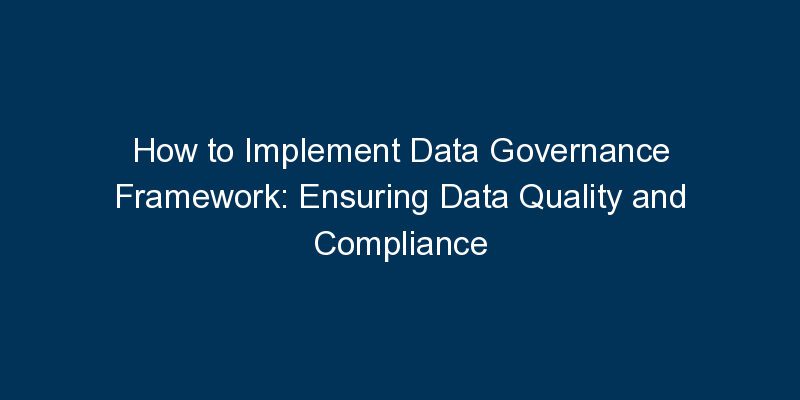Implementing a data governance framework is essential for organizations aiming to ensure data quality, integrity, and compliance with regulatory standards. This blog provides a comprehensive guide on how to implement a data governance framework, empowering businesses to manage and protect their data effectively.
Introduction:
Data governance involves the establishment of policies, processes, and controls to ensure that data is managed responsibly and meets specific quality and compliance standards. Implementing a data governance framework is crucial for organizations seeking to derive value from their data assets while minimizing risks. This guide explores the key steps in implementing a robust data governance framework.
Key Steps to Implement Data Governance Framework:
- Define Data Governance Objectives: Clearly define the objectives of the data governance framework. Identify the goals related to data quality, data privacy, compliance, and overall data management within the organization.
- Establish Data Governance Roles and Responsibilities: Define the roles and responsibilities of individuals involved in data governance. This includes data stewards, data custodians, data owners, and other key stakeholders who play a role in managing and safeguarding data.
- Create Data Policies and Standards: Develop comprehensive data policies and standards that govern how data is handled, stored, processed, and shared across the organization. Ensure that these policies align with regulatory requirements and industry best practices.
- Implement Data Quality Management: Integrate data quality management processes into the data governance framework. This involves defining data quality metrics, establishing data quality rules, and implementing mechanisms to monitor and improve data quality.
- Enforce Data Security Measures: Implement robust data security measures to protect sensitive and confidential information. This includes access controls, encryption, and audit trails to track and monitor data access and modifications.
- Provide Data Governance Training: Conduct training programs to educate employees on the principles and practices of data governance. Ensure that individuals handling data are aware of their responsibilities and understand the importance of data governance in achieving organizational objectives.
Conclusion:
Implementing a data governance framework is foundational for organizations committed to managing data effectively, ensuring data quality, and complying with regulatory standards. By following the steps outlined in this guide, businesses can establish a solid foundation for responsible data management and governance.






















Comments